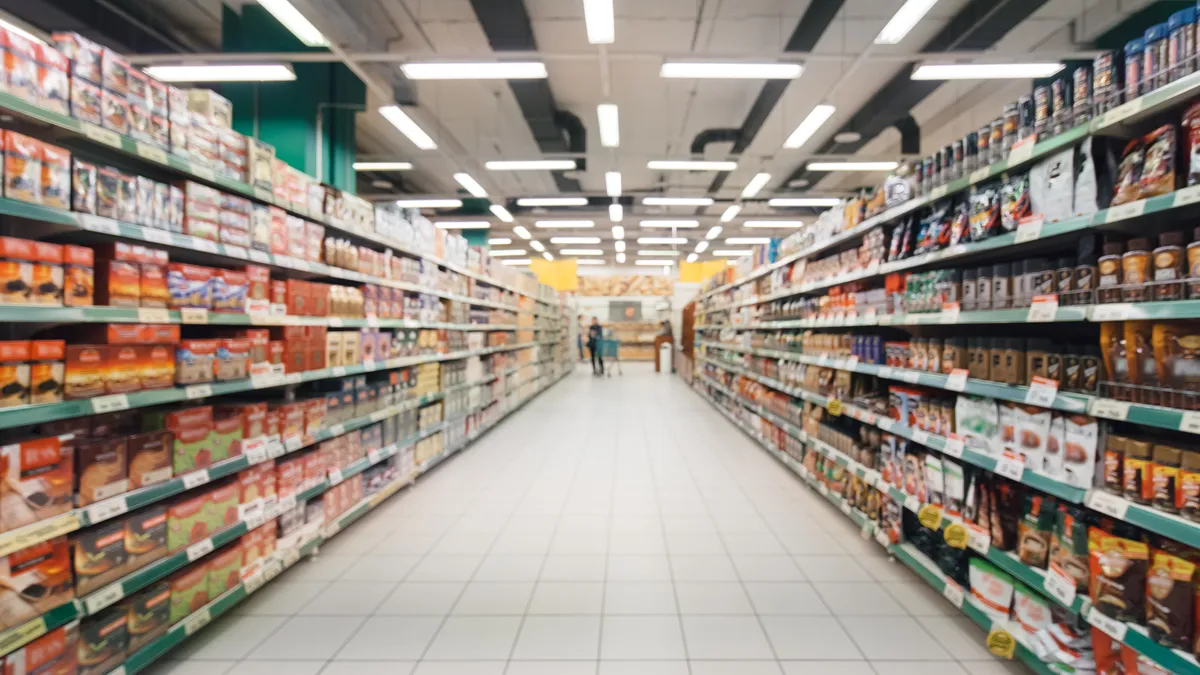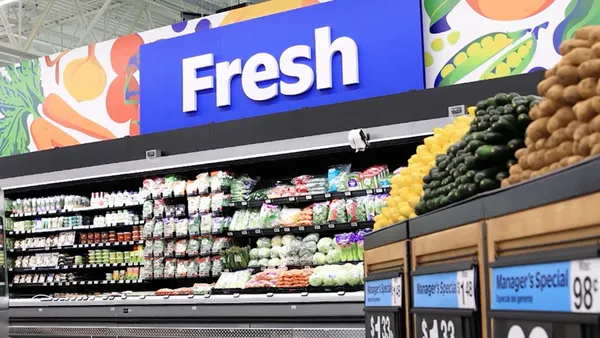Dive Brief:
- Spending at grocery stores rose 8% in October on a year-over-year basis, according to estimated data published Wednesday by the U.S. Census Bureau. Overall retail spending increased at an 8.3% annual rate.
- Grocery sales were up 1.4% in October compared with the previous month, while total retail sales moved forward at a monthly pace of 1.3%.
- Consumer spending on groceries accelerated last month, while inflation showed signs of easing.
Dive Insight:
The latest government data suggests that people remain in spending mode as a year marked by fast-rising prices and economic uncertainty moves into its final weeks and the holidays approach.
Grocery spending sped ahead last month at its fastest monthly clip in 2022 — a pace that was a full percentage point higher than the figure recorded during September. Meanwhile, the rate of grocery inflation, while still sharply elevated by historical standards, declined notably in October compared with the prior month.
Spending at grocery stores was also up significantly in October on an annual basis, with the 8% year-over-year increase following jumps by that measure of 6.8% in September and 7.7% in August. But while the amount shoppers spent at food retailers hit a three-month high in October, the figure was still lower than the rate recorded during every month in the first half of 2022.
In addition to boosting spending on groceries last month, shoppers also shelled out more for health and personal care items, furniture and vehicles, the Census Bureau reported. By contrast, sales at consumer electronics and appliance stores, and department stores fell in October.
Restaurants and bars, meanwhile, recorded a sharp uptick in sales, with spending up 1.6% in October compared with September and 14.1% year-over-year.
As shoppers continue opening their wallets at retailers, they are increasingly being forced to borrow money to meet their financial obligations. The amount people in the U.S. collectively owe on credit cards was up by $38 billion during the third quarter of the year compared with the prior quarter, a 15% year-over-year increase, according to a report released Tuesday by the Federal Reserve Bank of New York’s Center for Microeconomic Data.
The increase in credit card debt is the largest in two decades and represents a turnabout from the early months of the pandemic, when balances on those accounts declined markedly, the report noted.














